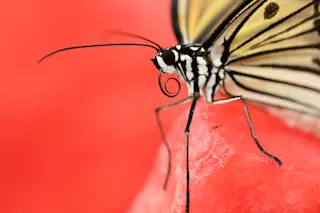She came to him in 1968, inside a small, cheap suitcase—her burned and shattered bones embedded in six blocks of calcified sand. The field researchers who dug her up in a parched no-man's-land in southeastern Australia suspected that she was tens of thousands of years old. He was 28. Almost every day for the next six months, he painstakingly freed her remains from the sand with a dental drill, prizing out more than 600 bone chips, each no larger than a thumbnail. He washed them carefully with acetic acid, sealed them with a preservative, and pieced them together into a recognizable skeleton. Looking closely at skull fragments, bits of arm bone, and a hint of pelvis, he became convinced that two things were true. First, the bones were human, Homo sapiens for sure, and they had held together a young woman. As he assembled this "monster three-dimensional jigsaw puzzle," Alan ...
Not Out of Africa
Alan Thorne's challenging ideas about human evolution
More on Discover
Stay Curious
SubscribeTo The Magazine
Save up to 40% off the cover price when you subscribe to Discover magazine.
Subscribe













